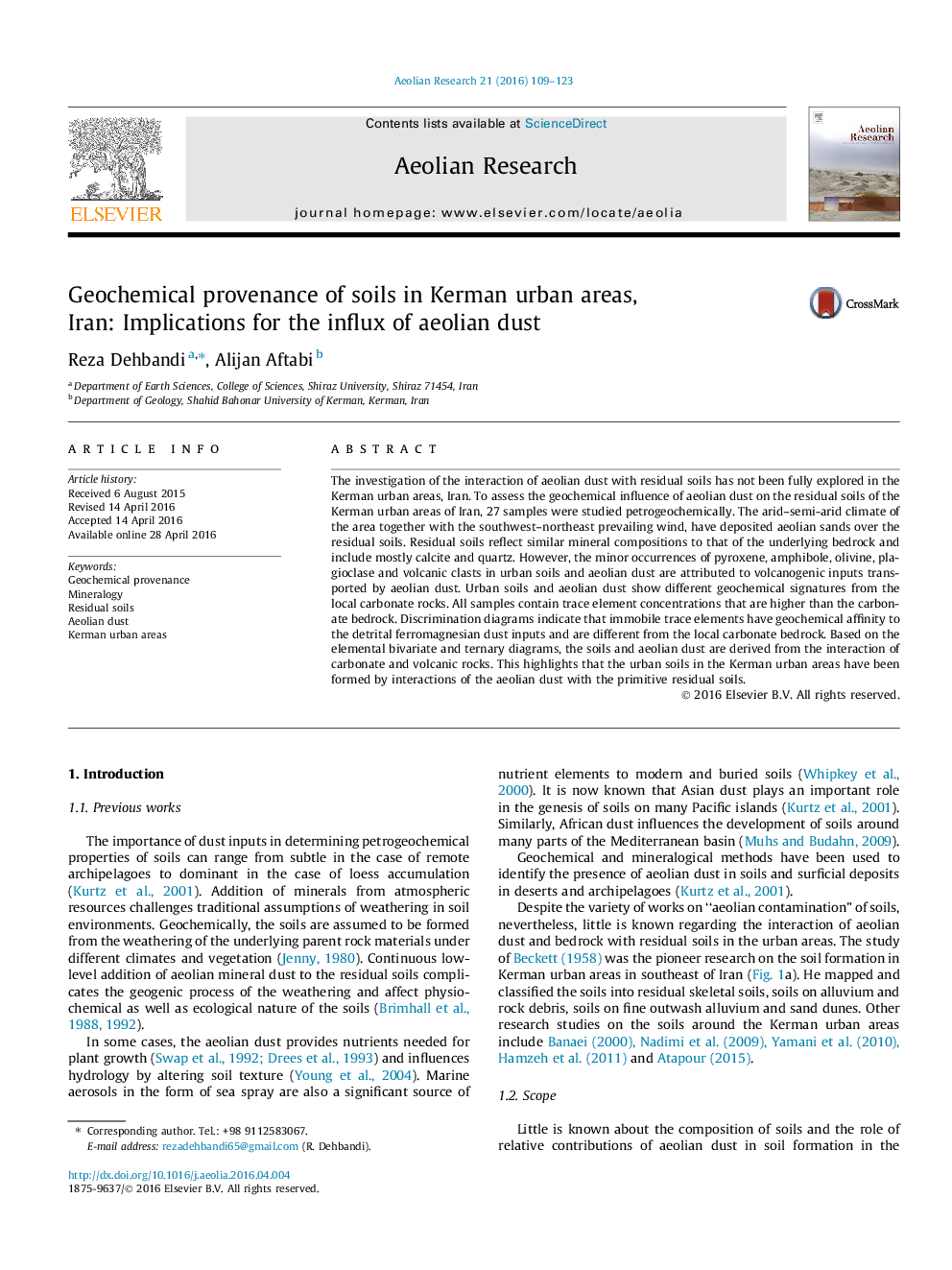| کد مقاله | کد نشریه | سال انتشار | مقاله انگلیسی | نسخه تمام متن |
|---|---|---|---|---|
| 6426285 | 1634107 | 2016 | 15 صفحه PDF | دانلود رایگان |
- Soil-petrogeochemical studies discriminate residual from the windblown dust soils.
- Mineralogically, soils contain aeolian volcanogenic, detrital and carbonate minerals.
- Immobile elements give a geochemical affinity to detrital ferromagnesian dust.
- Urban soils are formed by interactions of aeolian dust with residual soils.
The investigation of the interaction of aeolian dust with residual soils has not been fully explored in the Kerman urban areas, Iran. To assess the geochemical influence of aeolian dust on the residual soils of the Kerman urban areas of Iran, 27 samples were studied petrogeochemically. The arid-semi-arid climate of the area together with the southwest-northeast prevailing wind, have deposited aeolian sands over the residual soils. Residual soils reflect similar mineral compositions to that of the underlying bedrock and include mostly calcite and quartz. However, the minor occurrences of pyroxene, amphibole, olivine, plagioclase and volcanic clasts in urban soils and aeolian dust are attributed to volcanogenic inputs transported by aeolian dust. Urban soils and aeolian dust show different geochemical signatures from the local carbonate rocks. All samples contain trace element concentrations that are higher than the carbonate bedrock. Discrimination diagrams indicate that immobile trace elements have geochemical affinity to the detrital ferromagnesian dust inputs and are different from the local carbonate bedrock. Based on the elemental bivariate and ternary diagrams, the soils and aeolian dust are derived from the interaction of carbonate and volcanic rocks. This highlights that the urban soils in the Kerman urban areas have been formed by interactions of the aeolian dust with the primitive residual soils.
Journal: Aeolian Research - Volume 21, June 2016, Pages 109-123
